Although it is technically a Lincoln cent, because of the wheat stalks found on the coin’s reverse, most collectors refer to it as the Wheat Penny. These coins were made by the US Mint from 1909 to 1958, when the reverse was changed.
In this article, we will examine the 1940 Lincoln Wheat penny and learn more about its background, characteristics, and influencing elements.
What Is the 1940 Lincoln Wheat Penny Made Of?
The 1940 Lincoln Wheat penny features an image of Abraham Lincoln, the 16th president of the United States, from 1861 until his assassination in 1865. Due to its numismatic significance, it is a favorite among most collectors. Aside from being in high demand, 1940 Lincoln Wheat pennies are simple to come by.
President Roosevelt commissioned Victor D. Brenner to create a penny with Lincoln’s image on the coin’s obverse. This was contrary to the earlier convention that real individuals could not be depicted on US coins. The US Mint has continued to make this coin today with a modified reverse since Americans adored the original pieces that initially debuted in 1909.
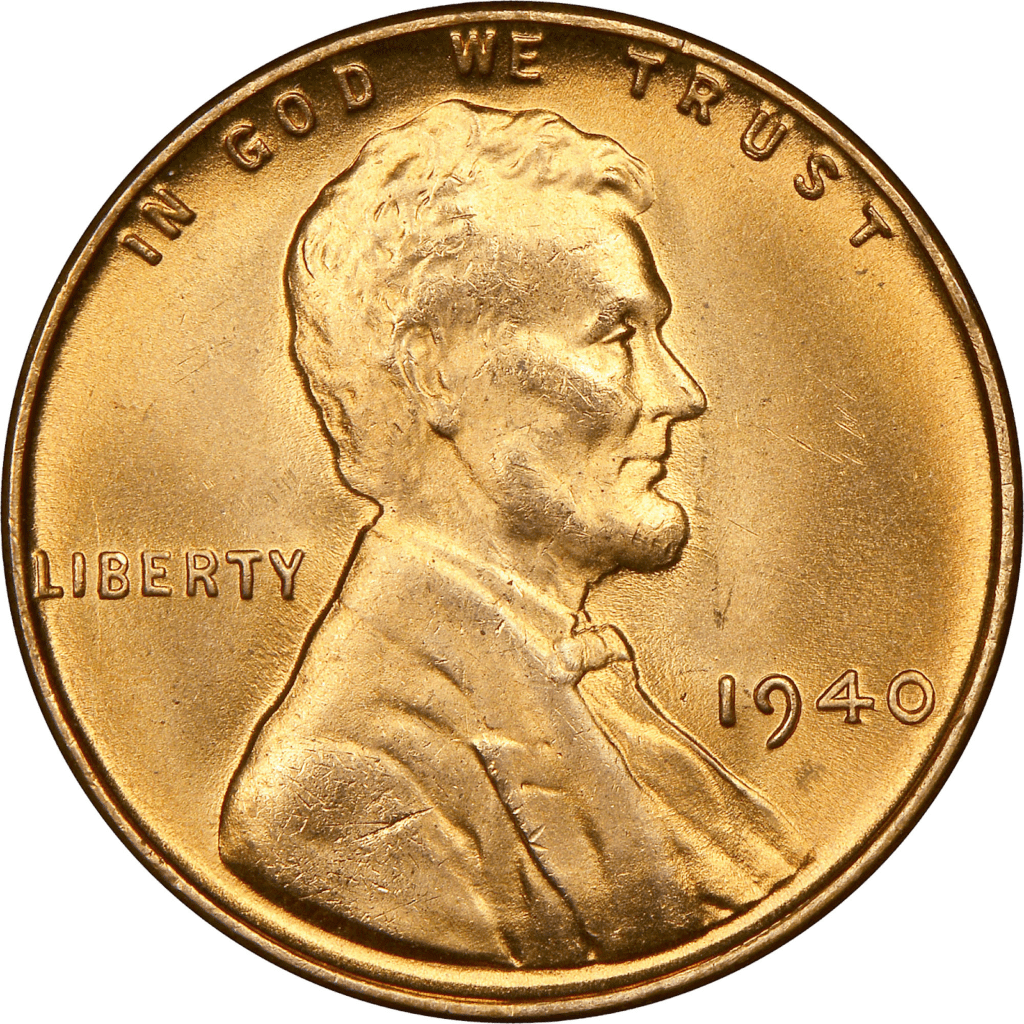
The 1940 Lincoln Wheat penny features the bust of President Lincoln on the obverse. Unlike many other US coins, it is framed by the phrase IN GOD WE TRUST on the top edge without anything else below.
Toward the President’s left side, behind him, the word LIBERTY is visibly struck. In front of him, toward the coin’s right rim, is the year of minting, 1940. If available, the mint mark would be inscribed beneath the year of minting.
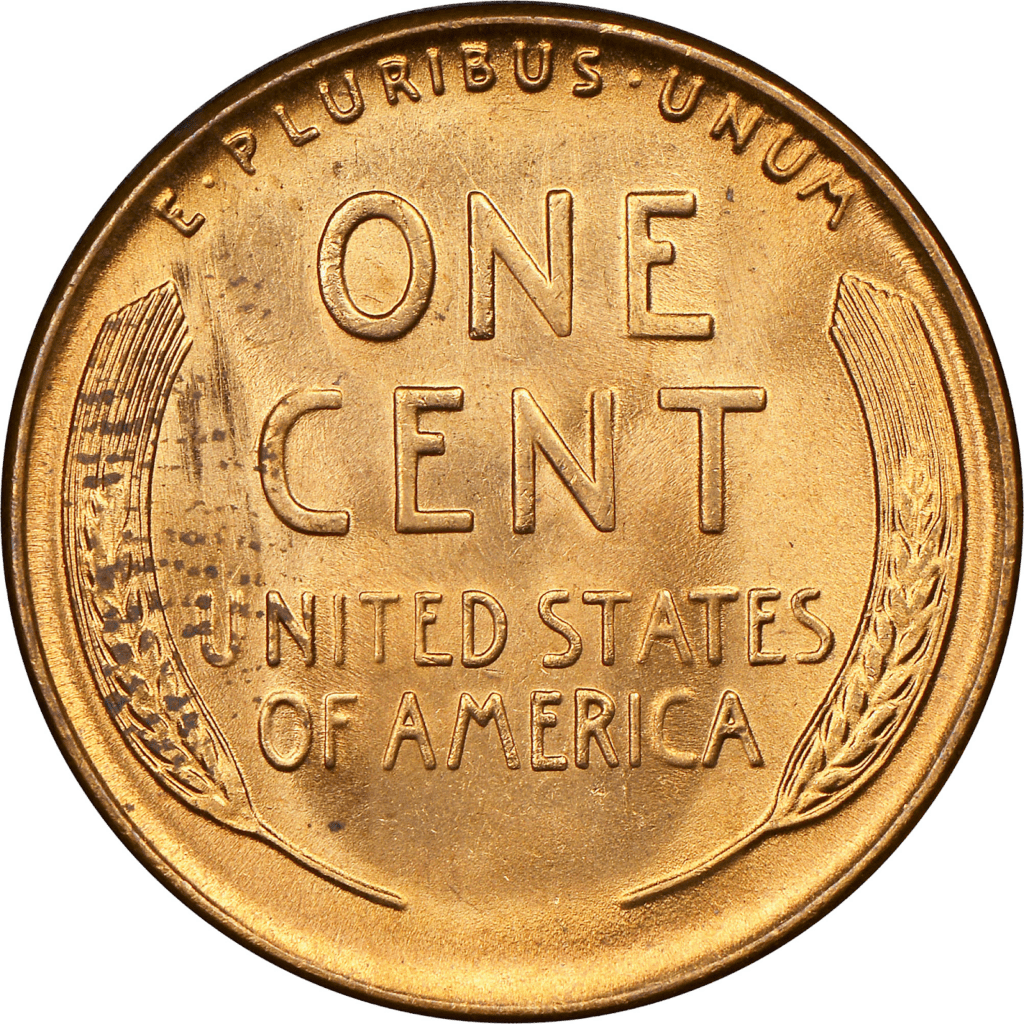
On the coin’s simple yet stylish reverse, you will find the two wheat stalks responsible for the coin’s moniker. The coin’s denomination, ONE CENT, and the words UNITED STATES OF AMERICA below it are elegantly surrounded by these stalks. The Latin phrase, E PLURIBUS UNUM, is also struck along the top rim of the coin’s design.
1940 Lincoln Wheat Penny Varieties
The Lincoln Wheat penny has a face value of $0.01 (one cent). It has a plain edge and is composed of 95% Copper and 5% Tin and Zinc. It weighs 3.11 grams and has a diameter of 19.00 mm.
These are the varieties of Lincoln wheat pennies produced in 1940:
| Variety | Mint Location | Mintage |
| 1940 D Lincoln Wheat Penny | Denver | 81,390,000 |
| 1940 S Lincoln Wheat Penny | San Francisco | 112,940,000 |
| 1940 P Lincoln Wheat Penny | Philadelphia | 586,810,000 |
| 1940 Proof Lincoln Wheat Penny | Philadelphia | 15,872 |
| Total | 781,155,872 |
1940 D Lincoln Wheat Penny
Edge: Plain
Mint Mark: D
Place of minting: Denver
Year of minting: 1940
Face Value: $0.01 (one cent)
Price: $0.17 to $2.28 (circulated condition)
Quantity produced: 81,390,000
Designer: Victor David Brenner
Composition: 95% copper and 5% tin and zinc
Mass: 3.11 grams
Diameter: 19.00 mm
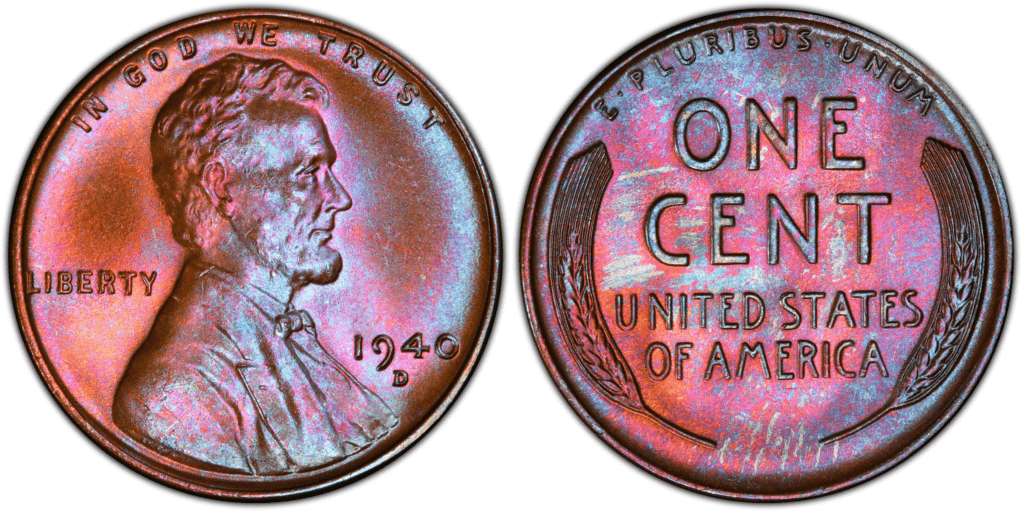
The 1940 D Wheat penny is a high-mintage issue widespread in all grades. Beginning in 1940, mintages grew quickly until reaching a high in 1944.
The Director of the Denver Mint reported that increased demand for coins has forced the operation of the Philadelphia and Denver Mints to work twenty-four hours daily. In contrast, the San Francisco mint operated for sixteen.
On the coin market, 1940 D Lincoln Wheat pennies are frequently affordable, and depending on the color, you can purchase one in mint condition for $2 to $35.
Even the most exquisite red MS 67 grade ones cost between $100 and $120. Interestingly, compared to coins produced in other mints that year, even the auction record is fairly low. In 2018, $3,120 was paid for the most expensive 1940 D Lincoln wheat penny.
1940 S Lincoln Wheat Penny
Edge: Plain
Mint Mark: S
Place of minting: San Francisco
Year of minting: 1940
Face Value: $0.01 (one cent)
Price: $0.17 to $2.00 (circulated condition)
Quantity produced: 112,940,000
Designer: Victor David Brenner
Composition: 95% copper and 5% tin and zinc
Mass: 3.11 grams
Diameter: 19.00 mm
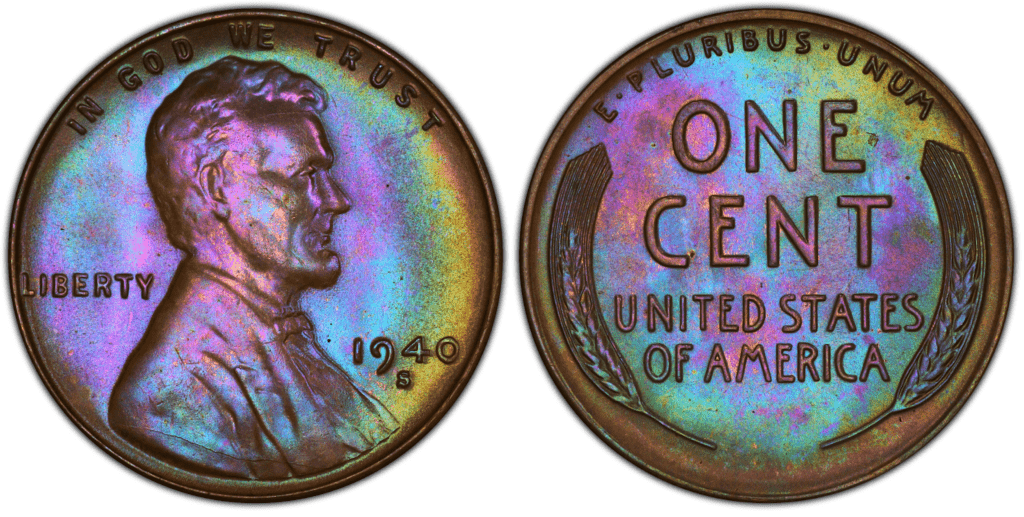
Numerous 1940 S pennies were struck using worn dies with distorted characteristics. The year’s supply of coins outside its typical jurisdiction stretched the San Francisco Mint to its breaking point. According to reports, the Federal Reserve Bank of Chicago received 163 tons of coins from the San Francisco Mint in November.
To transport the coins, a sizable fleet of express trucks was needed. It is believed that “S” mint coins have never traveled that far east to Chicago for distribution.
Red pieces are extremely prized by collectors, and as a result, they sell for between $130 and $155 per piece. One of these coins in the MS 68 grade sold at Stack’s Bowers auction for $9,600 to a collector.
1940 P Lincoln Wheat Penny
Edge: Plain
Mint Mark: no mint mark
Place of minting: Philadelphia
Year of minting: 1940
Face Value: $0.01 (one cent)
Price: $0.17 to $1.13 (circulated condition)
Quantity produced: 586,810,000
Designer: Victor David Brenner
Composition: 95% copper and 5% tin and zinc
Mass: 3.11 grams
Diameter: 19.00 mm
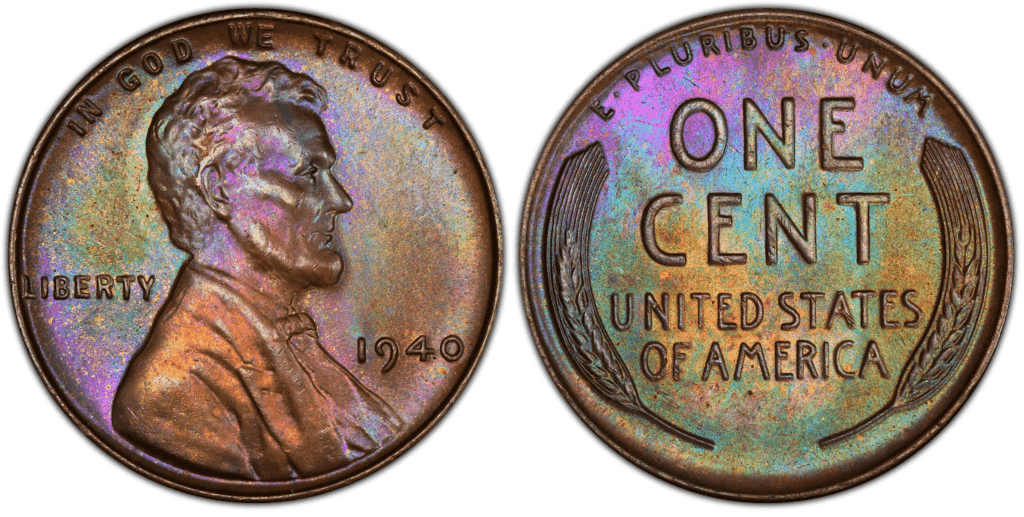
Generally speaking, 1940 P Lincoln Wheat pennies were well-crafted, making completely red gems prevalent. The majority of these are sharply struck.
On the coin market, 1940 D Lincoln Wheat pennies are frequently affordable, and depending on the color, you can purchase one in mint condition for $2 to $35.
The increase in coinage during this time was noted in the Mint Director’s Annual Report. The report states: “Domestic coinage manufactured during the fiscal year ending June 30, 1940, amounting to 768,090,830 pieces, exceeded the production of any previous fiscal year in the history of the Government, the coin most largely produced being the 1-cent piece, as in previous years.”
1940 Proof Lincoln Wheat Penny
Edge: Plain
Mint Mark: no mint mark
Place of minting: Philadelphia
Year of minting: 1940
Face Value: $0.01 (one cent)
Price: $25 to $300 (circulated condition)
Quantity produced: 15,872
Designer: Victor David Brenner
Composition: 95% copper and 5% tin and zinc
Mass: 3.11 grams
Diameter: 19.00 mm
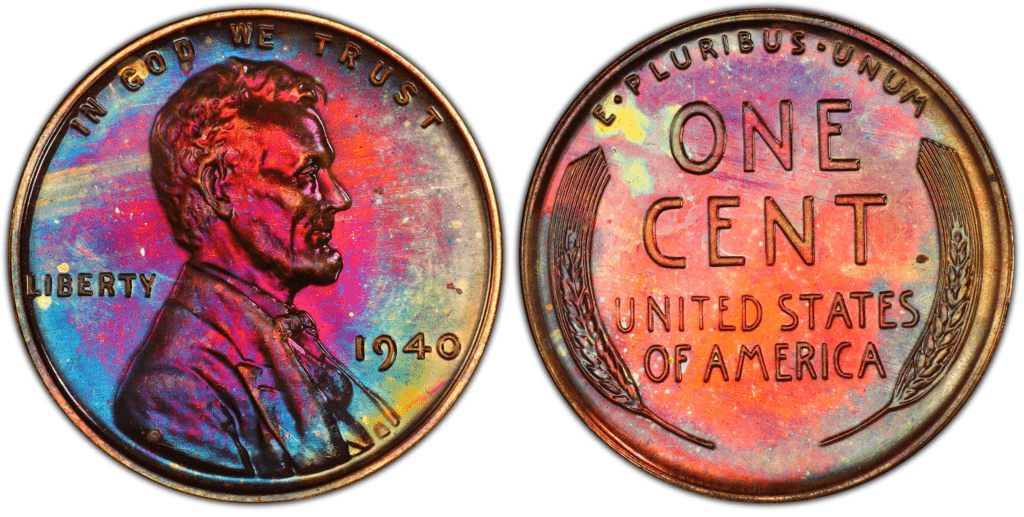
The Philadelphia mint additionally struck 15,872 proof Lincoln wheat coins in 1940. Although significantly less than the post-war mintage, the mintage was higher than the pre-war level.
These coins normally cost $25 to $300 since their pricing mostly depends on the color. The most sought-after items are red and in the best condition and can sell for up to $4,500 at auction.
On the other hand, Heritage Auctions in 2017 awarded the record to one particular proof minted this year. This magnificent coin with superb red toning costs an astonishing $11,163 from one collector.
List Of 1940 Lincoln Wheat Penny Errors
Clipped Planchet Error
A Clipped Planchet error happens when the die clips the coin edge before it is ejected.
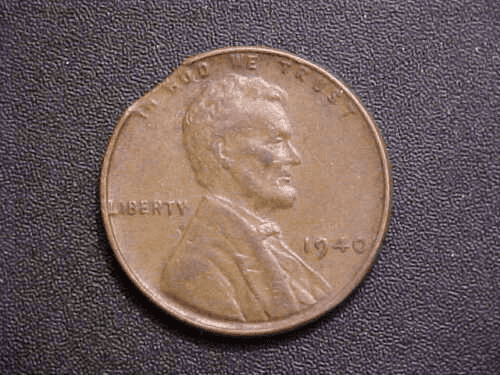
Doubled Die Error
A Doubled Die error occurs when the die moves while the coin is being hubbed. As a result, some features tend to double or shadow one another.
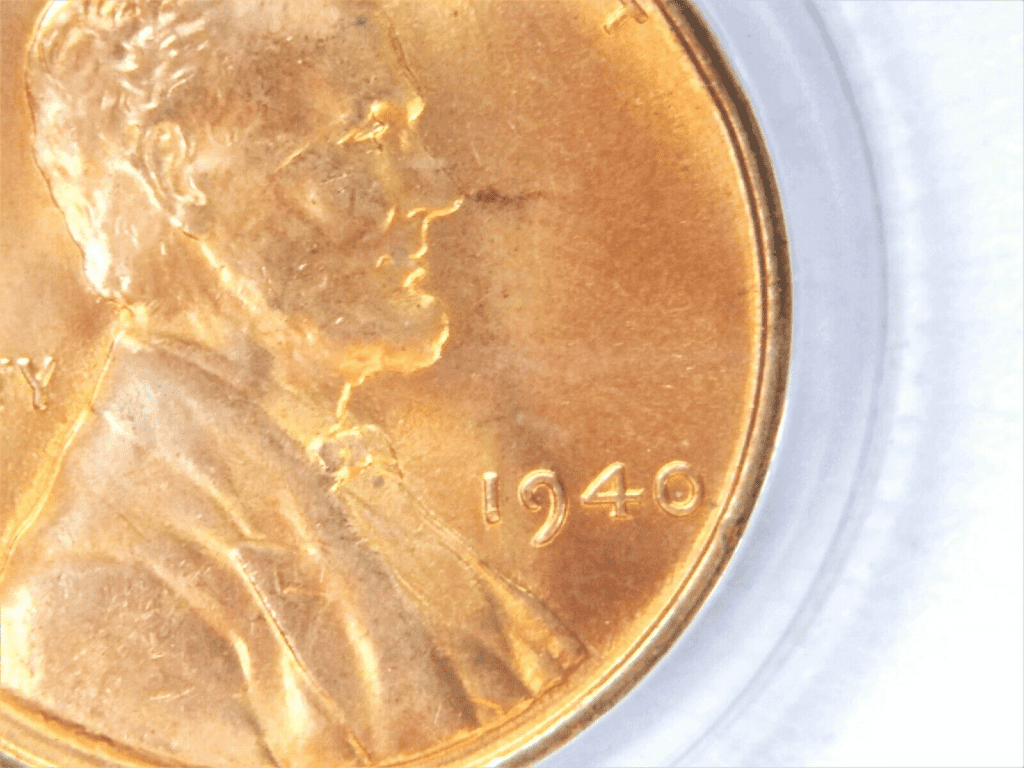
Rim Error
A Die Cud is a type of rim error that produces a flat, slightly raised bump protruding from the rim onto the obverse or reverse of the coin. They are among the most desirable types of coin rim errors.
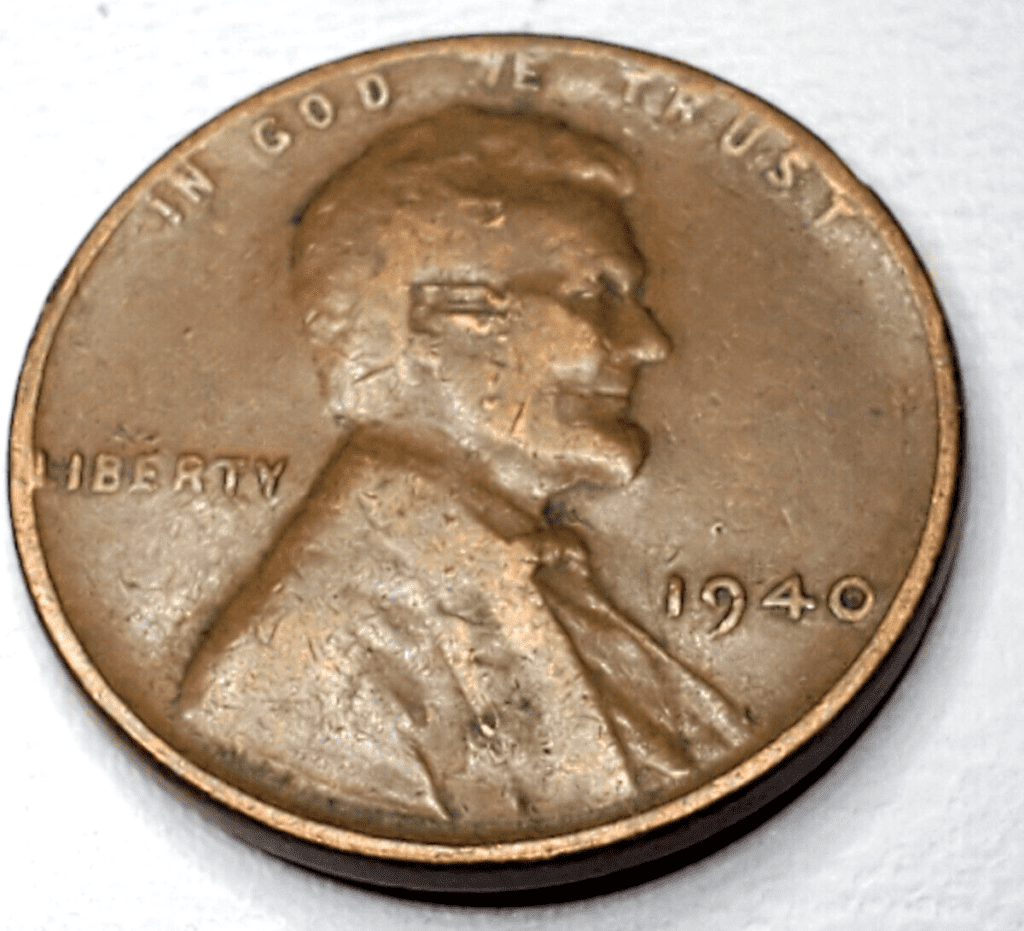
Lamination Error
Lamination error occurs when the outer coin coat gets damaged during the minting process.
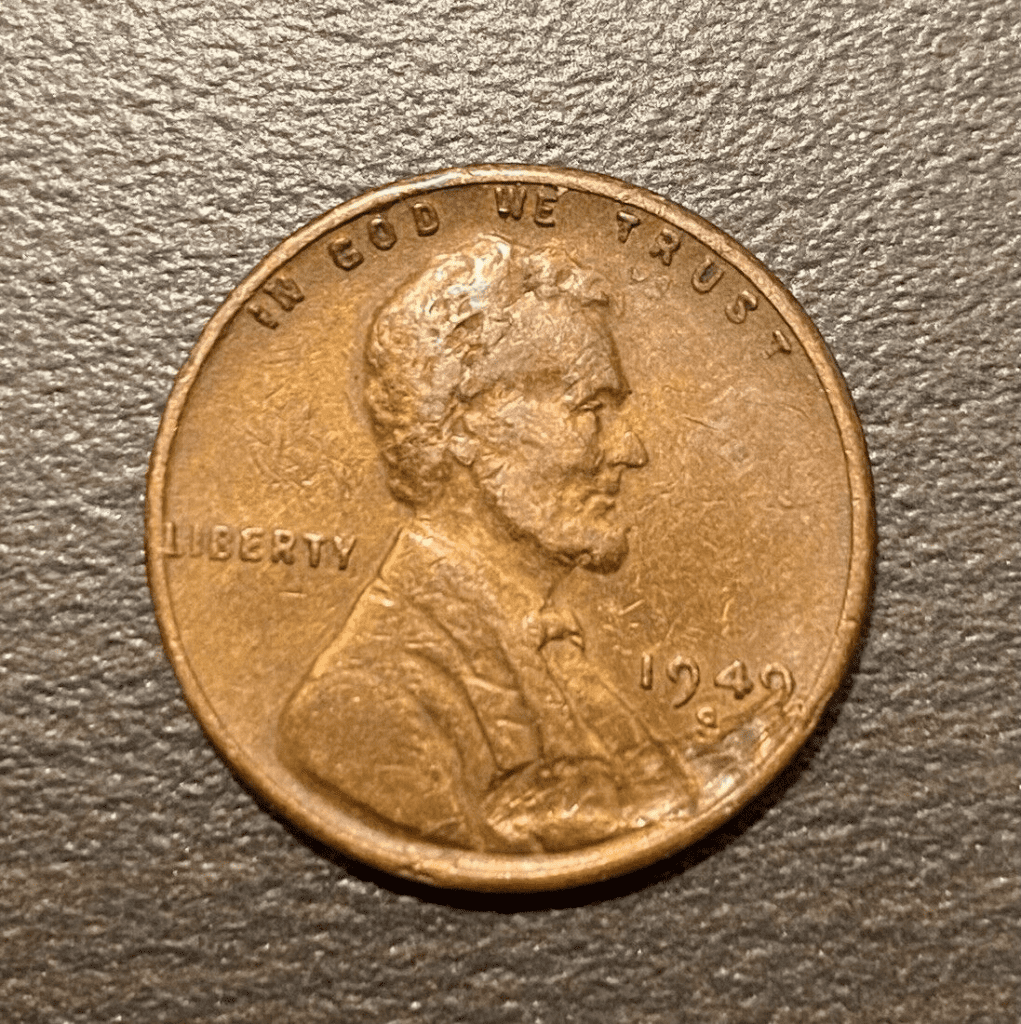
How Much Is The 1940 Lincoln Wheat Penny Worth Today?
USA Coin Book estimated the value of a 1940 Lincoln Wheat Penny to be worth $0.20 in Average Condition. Uncirculated (MS+) Mint Condition can reach up to $2.28 to $3.30 or more. If you have a proof coin from this year, it can sell for as much as $51 or more!
How Does The Grading System Work?
The Sheldon Scale is used by numismatists to provide a numerical value to coins. The Sheldon Scale goes from poor (P-1) to perfect mint state (P-1) (MS-70). Coins were originally evaluated using words to reflect their condition (Good, Fair, Excellent, Etc.). Unfortunately, coin collectors and dealers had different ideas about what each of these terms represent.
Professional numismatists joined together in the 1970s and established CoinGrading standards. These numismatists now assign grades at key places on the seventy-point scale, using the most regularly utilized numeric points in conjunction with the original adjective grade. The following are the most common coin grades:
-
-
- (P-1) Poor – Indistinguishable and probably damaged; if used, must have a date and mintmark; otherwise, rather battered.
- (FR-2) Fair – Nearly smooth, but without the damage that a coin graded Poor often possesses. The coin must have enough detail to be identified.
- (G-4) Fair – Inscriptions have merged into the rims in some areas, and important elements have been mostly erased.
- (VG-8) Very Good- A little weathered, but all of the primary design elements are visible, albeit faintly. There is little if any, central detail left.
- (F-12) Good – The item is very worn, yet the wear is even, and the overall design details stand out clearly. Rims are almost completely isolated from the field.
- (VF-20) Very Fine – Moderately weathered, with some finer features still visible. The motto or all letters of LIBERTY are readable. Both sides of the coin have entire rims that are separated from the field.
- (EF-40) Extremely Fine – Gently used; all gadgets are visible, and the most important ones are bold. The finer details are bold and clear, however, light wear may be seen.
- (AU-50) Uncirculated – Slight evidence of wear on the coin’s design’s high points; may have contact marks; eye appeal should be adequate.
- (AU-58) Uncirculated Choice – Slight traces of wear, no severe contact marks, almost full mint shine, and great eye appeal.
- (MS-60) Mint State Basal – Strictly uncirculated; no indication of wear on the coin’s highest points, but an unsightly coin with reduced luster, visible contact marks, hairlines, and other flaws.
- (MS-63) Mint State Acceptable – Uncirculated, but with contact scratches and nicks, little reduced shine, but otherwise appealing appearance. The strike is weak to average.
- (MS-65) Mint State Choice – Uncirculated with great mint shine, very little contact blemishes, and exceptional eye appeal. The strike is unusually severe.
- (MS-68) Mint State Premium Quality – Uncirculated with superb luster, no obvious contact marks to the naked eye, and exceptional eye appeal. The strike is quick and appealing.
- (MS-69) Almost Perfect Mint State – Uncirculated with perfect brilliance, a sharp and appealing strike, and extremely good eye appeal. A near-perfect coin with minor imperfections in the planchet, strike, and contact markings (seen only under 8x magnification).
- (MS-70) Mint State Perfect – Under 8x magnification, there are no tiny imperfections discernible; the strike is crisp, and the coin is perfectly centered on a beautiful planchet. Rarely seen on a coin, this coin is bright and whole, with original luster and exceptional eye appeal.
-
Where To Buy Or Sell 1940 Lincoln Wheat Penny?
Online is the most convenient way to buy or sell 1940 Lincoln Wheat pennies. Most vendors make offers on sites like eBay, Etsy, and Amazon. On the other hand, you can also buy or sell your coins at antique or coin shops.
Experts from PCGS and NGC can also guide you if you need advice on where and how to buy or sell your 1940 Lincoln Wheat Pennies.
FAQs
How much is a 1940 Wheat penny worth with no mint mark?
According to the USA Coin Book, the 1940 Lincoln Wheat penny’s estimated value is $0.20 in Average Condition and can be worth up to $3.30 in Uncirculated (MS+) Mint Condition. Proof coins have a value of up to $51.
Where is the mint mark on a 1940 Wheat penny?
Most 1940 Wheat pennies were struck at the Philadelphia mint and did not feature any mint mark. Others came with the “S” and “D” mintmarks made in the San Francisco and Denver mints, respectively. The mint mark is inscribed on the coin’s obverse beneath the year of minting.
Is a 1940 Wheat penny rare?
No. Since millions of these coins were produced in 1940, the 1940 penny is not rare. However, some specimens, like proof coins with cameo frosting, are rare.
1940 Liberty Half Dollar Value Guide
1940 Jefferson Nickel Value Guide
1941 Mercury Dime Value Guide
1942 Washington Quarter Value Guide
1943 Lincoln Steel Penny Value Guide
